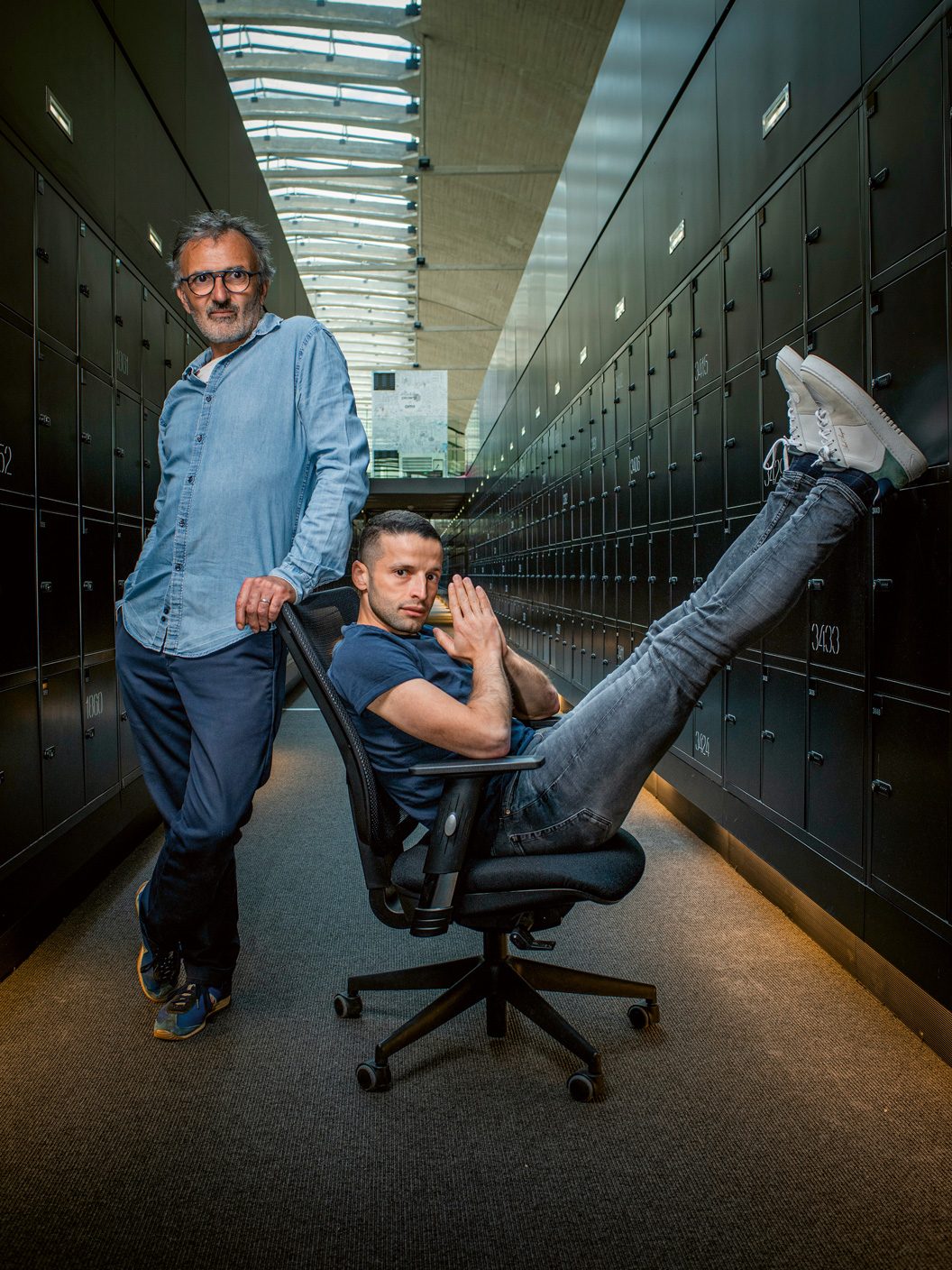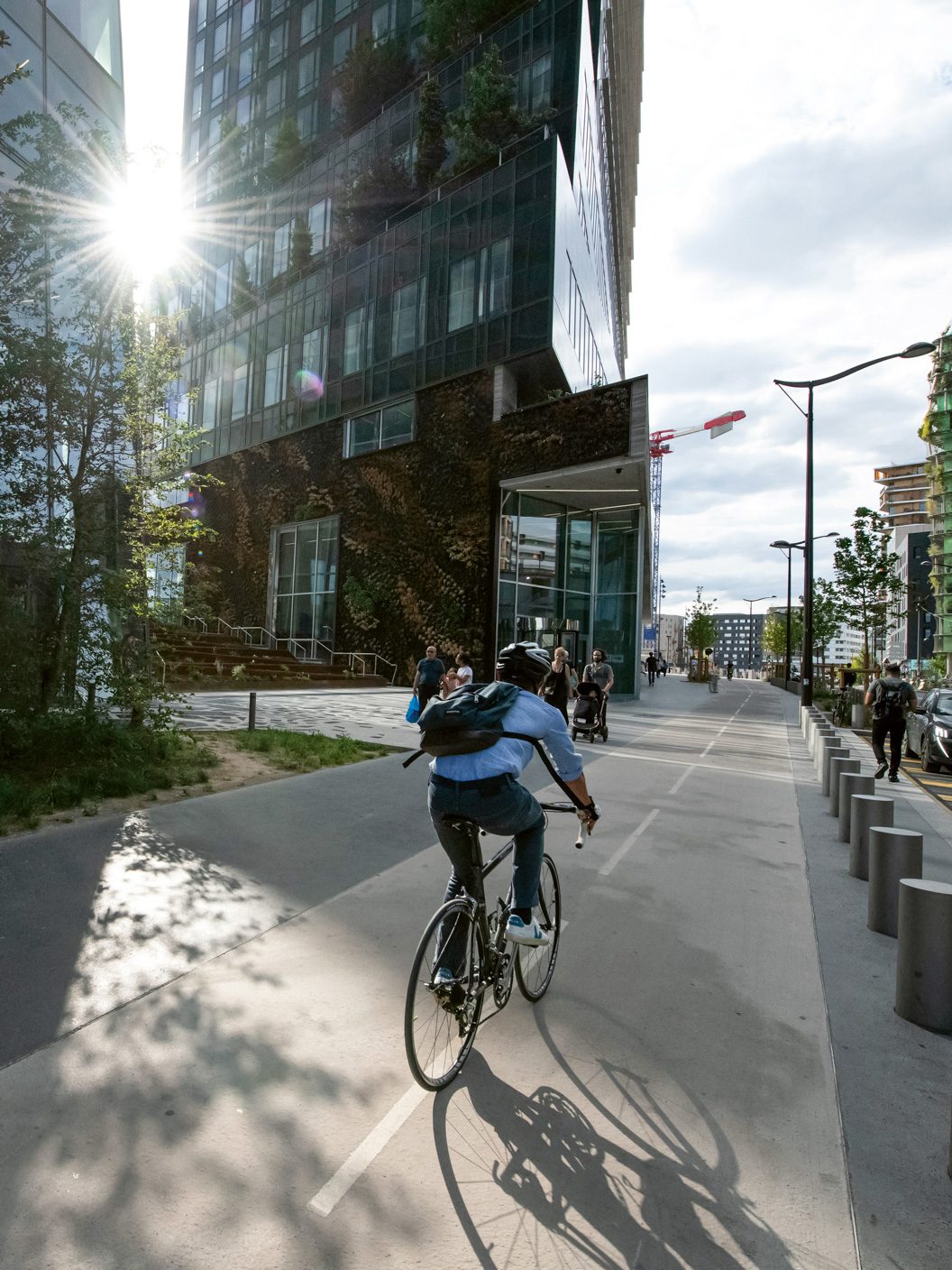
Paris Rive Gauche - Portrait of a neighborhood
Although the restructuring of the Paris Rive Gauche district is still a work in progress, the contours of this new district are now clearly defined. While La Défense in the west of Paris is resolutely dedicated to business, the prevailing focus here is on social diversity with private, social and student housing, a heightened function as a center of higher education, and an employment hub offering a wide range of different professional activities.
The district is also characterized by the assertion of a strong cultural identity with La Bibliothèque nationale de France or Cité de la mode et du design (Fashion and Design Center), the architectural audacity of its buildings, and the refreshing spirit of street art decorating its walls.
With its low-carbon buildings, numerous greening operations, enhanced accessibility, and a wide range of soft mobility options, Paris Rive Gauche also forms part of a movement for greater social solidarity, sustainability, and ecological balance.
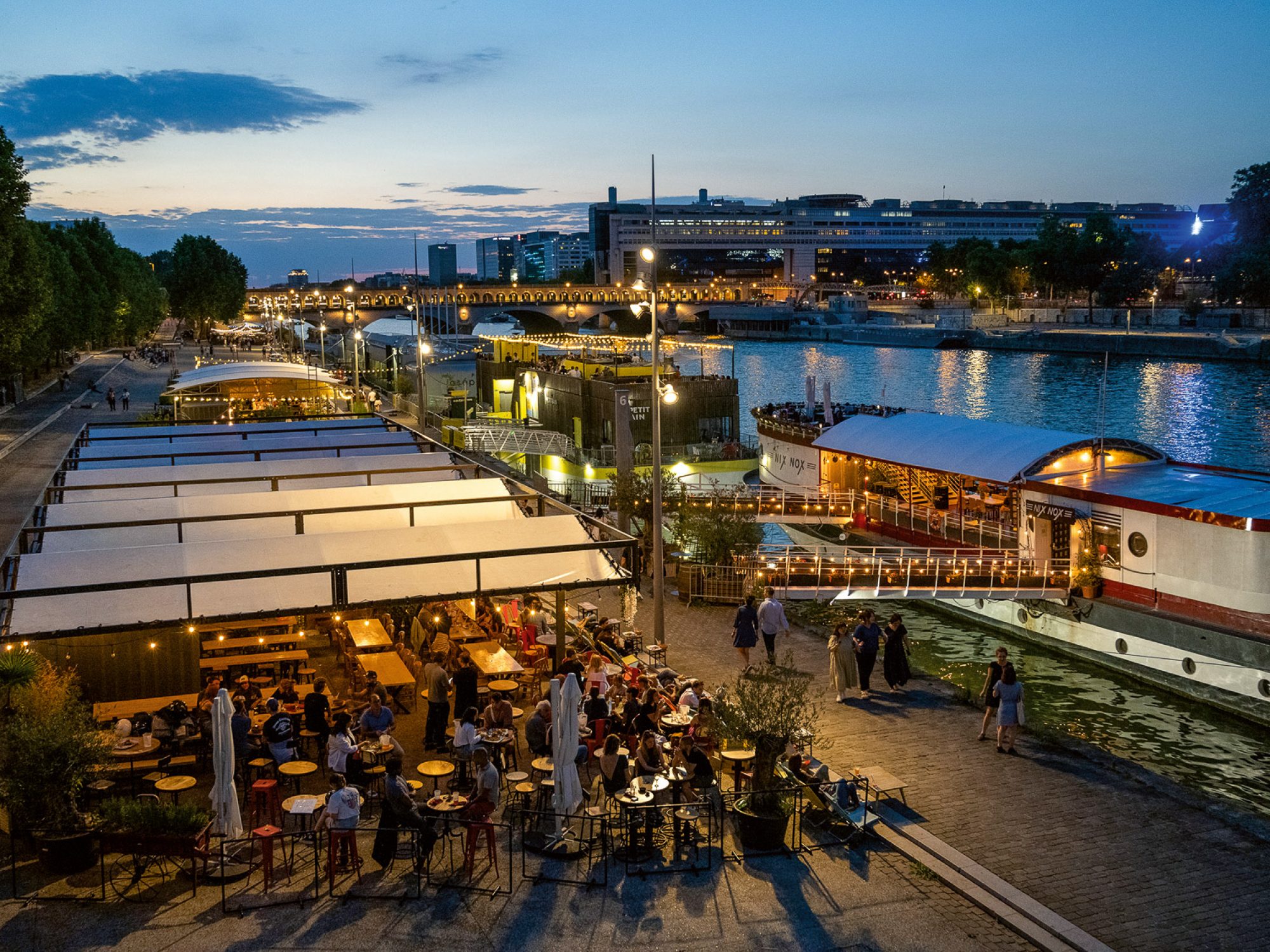
The Seine is the real common denominator of Paris Rive Gauche running, as it does, along the entire length of the district. The only constant element in a neighborhood undergoing major transformations, it has shaped the history, landscape, and uses of this part of Paris. In the 19th century, the river played an important role in the industrial development of the area by allowing boats to transport goods to the processing plants located along the quays. These same quays along the Seine, restored to the Parisians following the work to cover the railway tracks, are now ideal places for walks and gentle strolls. There’s also a pier for river passenger transport, a floating swimming pool, restaurants, bars, exhibition centers, and concert venues.
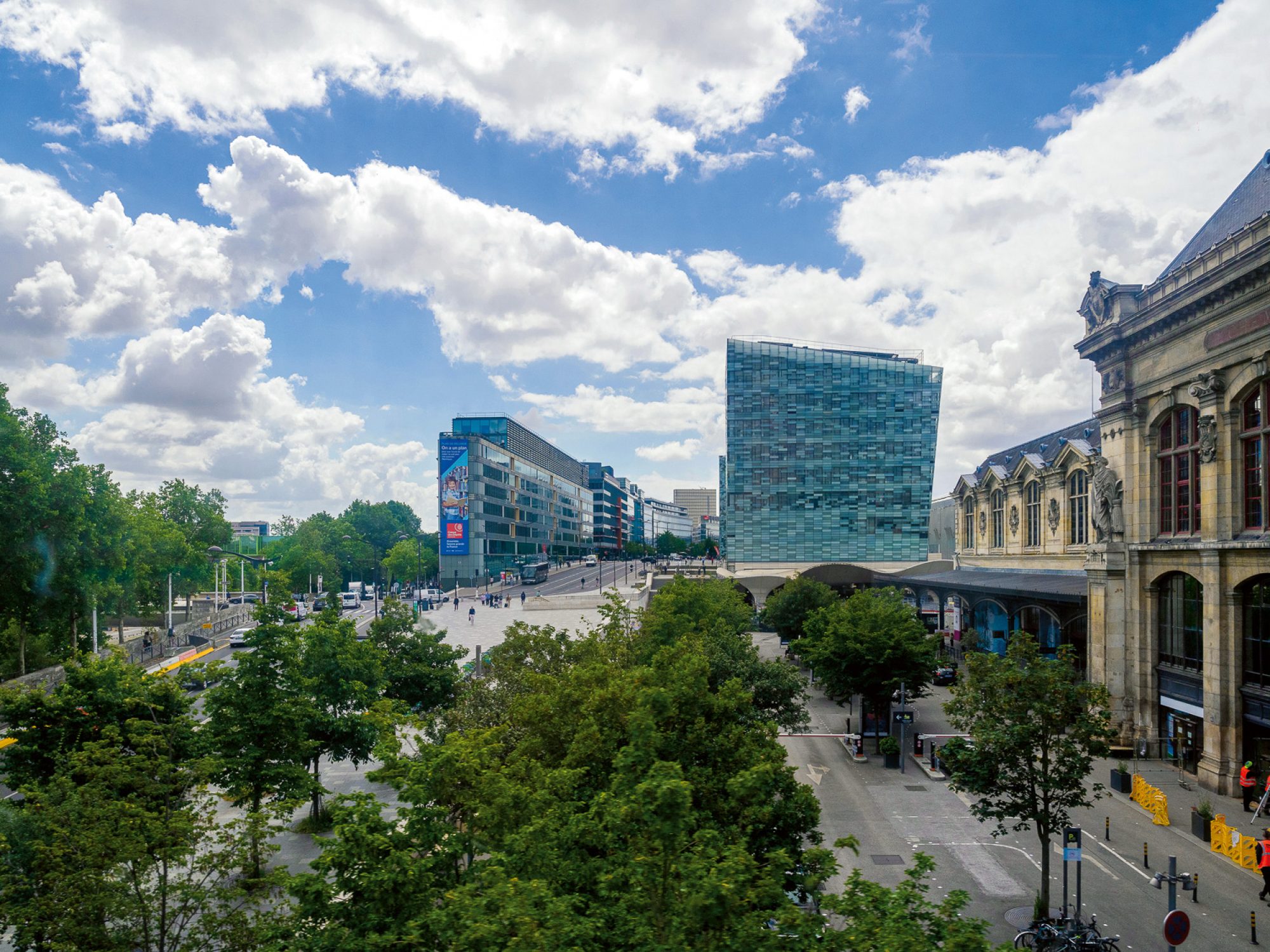
Two large-scale construction projects are still underway around the Gare d’Austerlitz station. In front of the Pitié-Salpêtrière hospital, a huge reservoir is being built to store water from heavy storms and prevent it from being discharged into the river, while the Gare d’Austerlitz station is undergoing major renovation work that should enable it to double the number passengers passing through it by 2030. Moving east beyond the railway station, Avenue Pierre-Mendès-France has seen the arrival of a great many companies over the past 20 years, such as Caisse des dépôts et consignations, Groupe BPCE (which was founded here in 2009) and, more recently, the newspaper the Le Monde group. A number of bars and restaurants have followed in the wake of these companies.
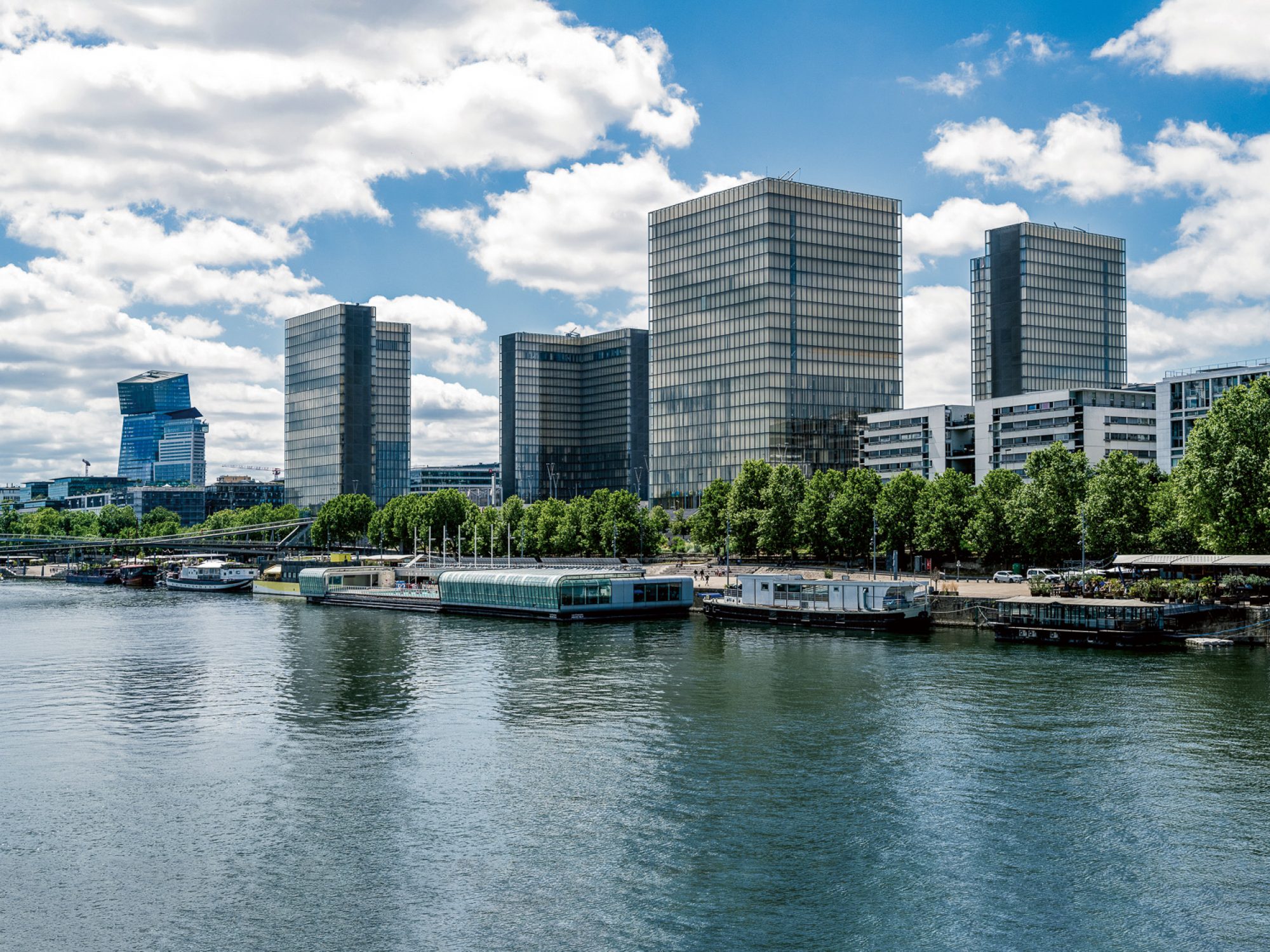
The Bibliothèque nationale de France, officially opened in 1996, has contributed a great deal to the development and appeal of this part of Paris. Distinguished by four large angular towers representing four open books named the towers of Time, Laws, Numbers, and Literature, the Bibliothèque nationale de France occupies a 7.5 hectares plot on an esplanade of 60,000 square meters. In 2019, its 2,160 employees wel-comed more than 920,000 visitors.
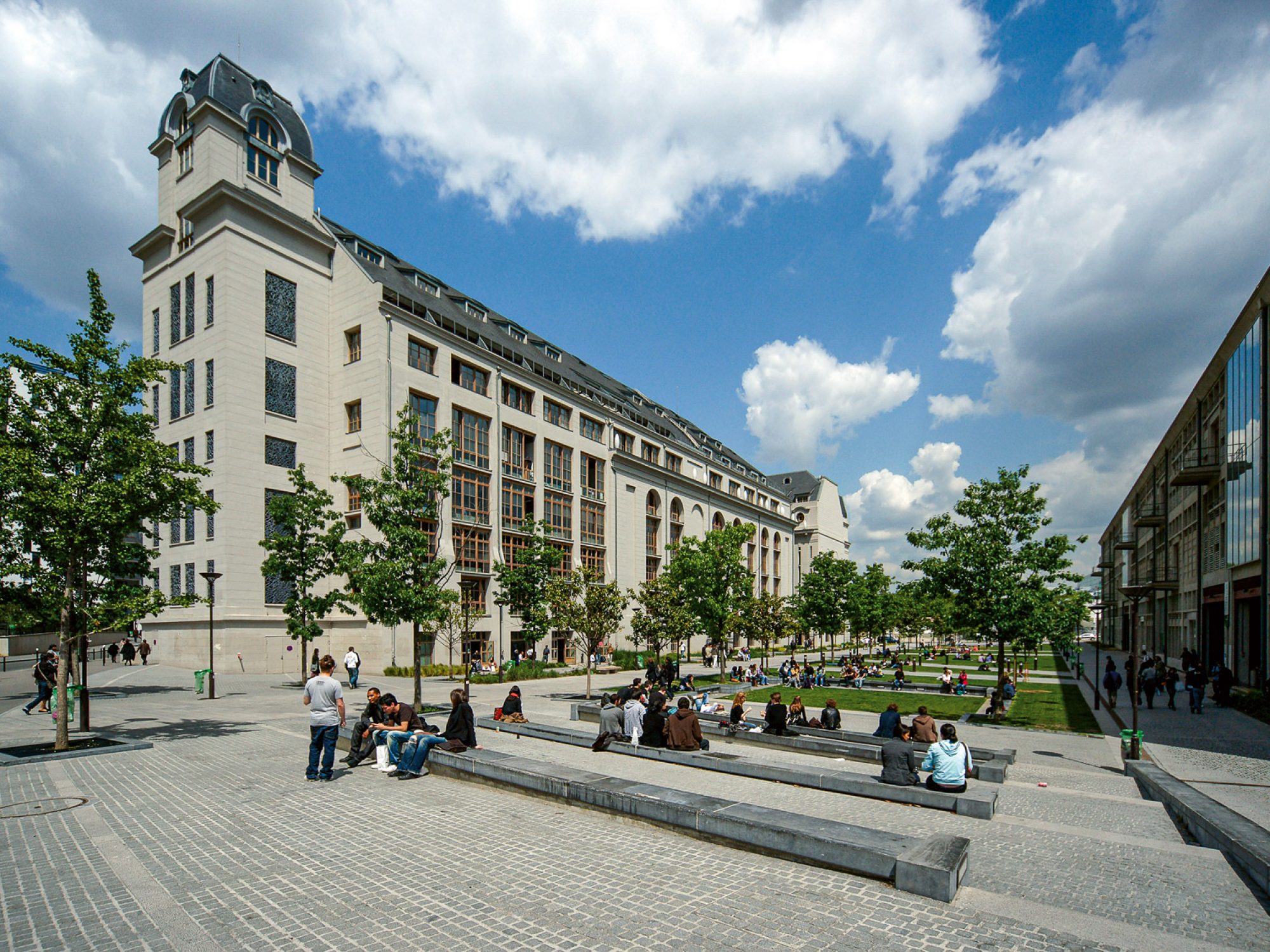
Located on the site of the former Grands Moulins de Paris, the University of Paris-Cité specializes in science and health, but also teaches the humanities and social sciences, arts, literature, and languages. Its research activities are pursued by a total of 102 teams, 80% of which work in association with other major research institutes. Here, nearly 2,000 lecturer/researchers train 2,500 doctoral students and more than 26,000 undergraduate students.
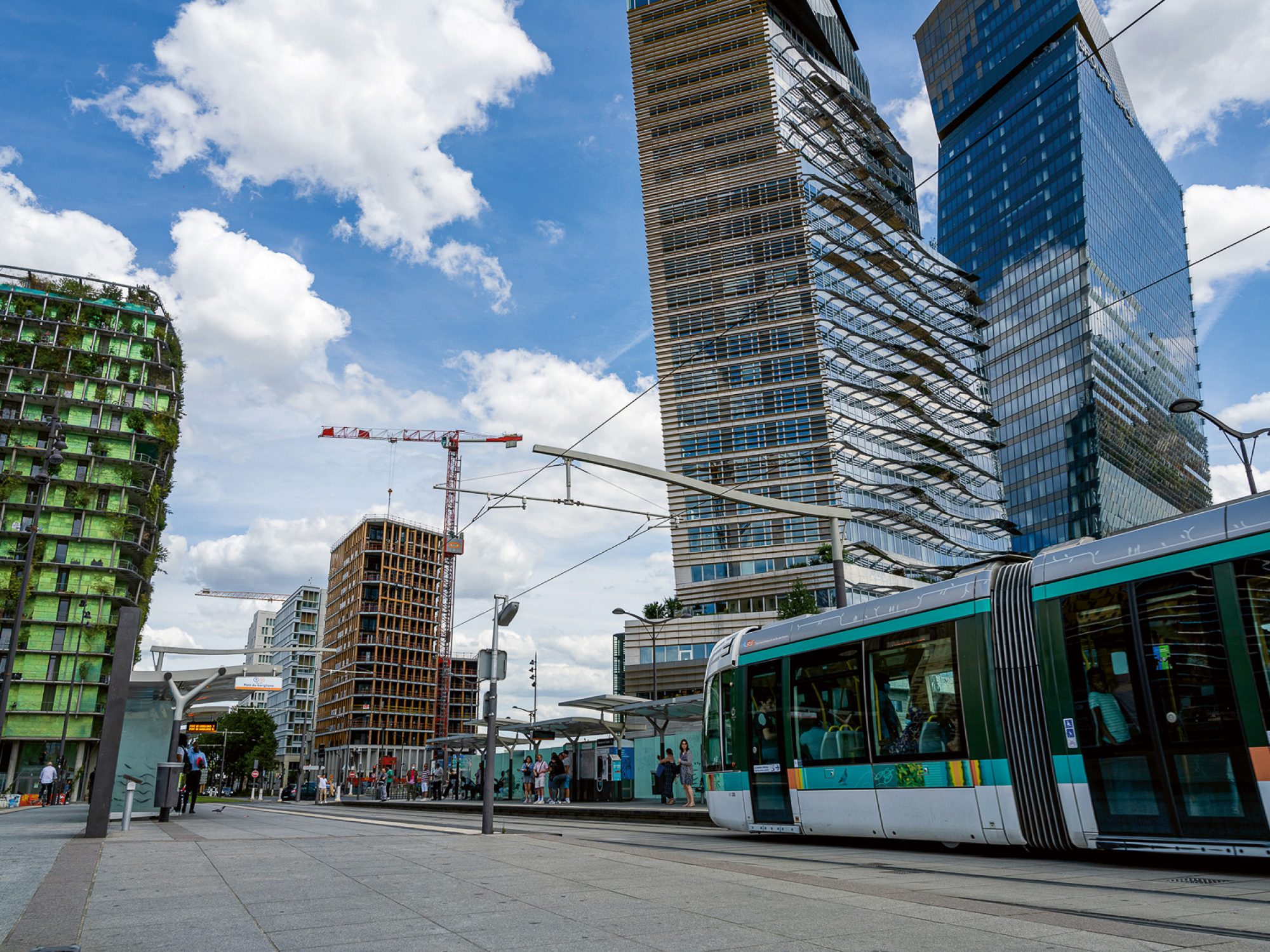
Featured in Les Misérables
Victor Hugo dedicated a chapter of his famous novel to Pierre Emmanuel Bruneseau (1751-1819), the inspector of works for the city of Paris and creator of the Paris Sewer Service: “The whole visit to the subterranean stream of filth of Paris lasted seven years, from 1805 to 1812. As he proceeded, Bruneseau drew, directed, and completed considerable works.”
